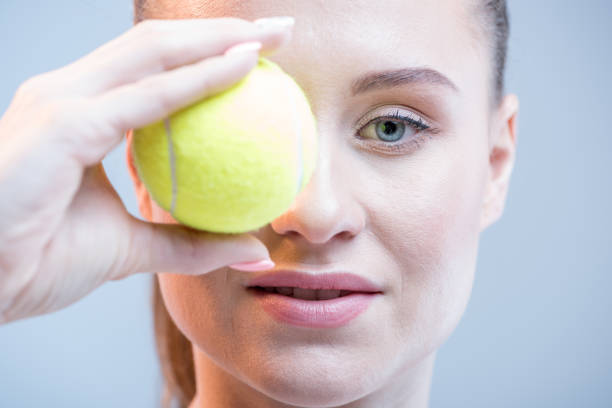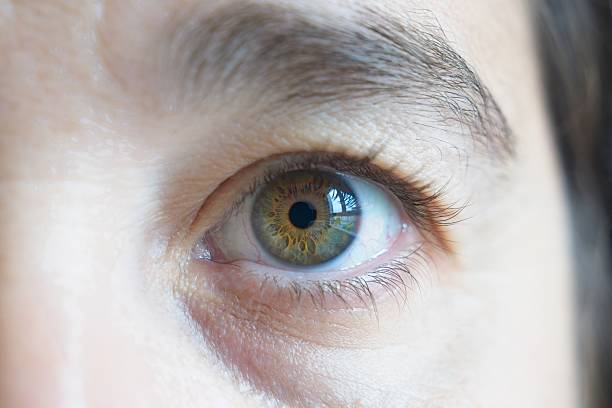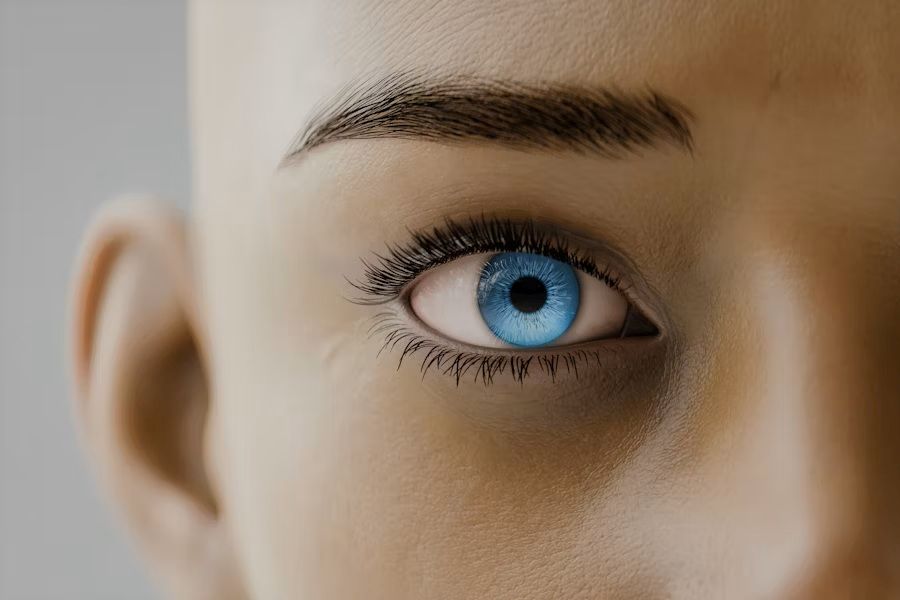Il tuo carrello è vuoto
Iris Patterns in Professional Athletes: What Elite Performance Looks Like

What if the secret to elite athletic performance isn't just in muscles or mindset, but also in the eyes? The iris—the colorful ring around the pupil—is as unique as a fingerprint. Could these intricate patterns provide insight into the prowess of professional athletes?
In this article, we'll explore the unique characteristics found in athletes' eyes, examine how intensive training might affect iris appearance, and compare different sports to uncover what elite performance looks like through the lens of the iris.
The Eye's Hidden Tapestry: Understanding Iris Patterns
The human iris is a complex structure composed of muscle tissue and pigmentation, forming patterns that are both intricate and individual. These patterns not only contribute to eye color but also reflect the unique physiological makeup of each person.
The Science Behind Iris Structures
Iris patterns develop during gestation and are influenced by genetic and environmental factors. Key features include:
-
Crypts: Tiny holes or gaps in the iris stroma.
-
Contraction Furrows: Circular lines created by the iris dilator muscles.
-
Pigment Spots: Areas of increased or decreased pigmentation.
These elements combine to form an iris pattern that is unique to each individual.
Genetics and Iris Patterns
Genetics play a significant role in determining iris characteristics. While eye color is a well-known hereditary trait, the nuances of iris patterns are also influenced by complex genetic interactions.
Unique Characteristics in Athletes' Eyes
Professional athletes often exhibit exceptional physical traits. Could their irises also display unique characteristics associated with elite performance?
Enhanced Crypts and Athletic Potential
Some studies suggest a correlation between prominent crypts and certain personality traits like impulsiveness and risk-taking. These traits can be advantageous in high-pressure sports situations.
Contraction Furrows and Dynamic Vision
Contraction furrows result from the iris's ability to quickly adjust pupil size. Athletes requiring rapid visual adaptation may exhibit more pronounced furrows, aiding in activities where lighting conditions change swiftly.
Pigmentation Variations and Light Sensitivity
Variations in iris pigmentation can affect light sensitivity. Athletes in outdoor sports might develop adaptive pigmentation changes, offering protection against glare and enhancing visual clarity.
How Intensive Training Might Affect Iris Appearance
Intensive physical training impacts the body in numerous ways. But does it extend to altering the appearance of the iris?
Physiological Stress and Iris Features
Chronic physical stress from intense training could potentially influence iris patterns:
-
Increased Blood Flow: Heightened vascular activity might affect iris coloration.
-
Muscle Development: While primarily affecting skeletal muscles, intense use of ocular muscles could subtly alter iris structures over time.
Hormonal Influences
Hormonal fluctuations induced by training could impact pigmentation:
-
Melanin Production: Stress hormones might influence melanin synthesis, slightly changing iris pigmentation.
-
Adrenaline Levels: Frequent spikes could affect pupil dilation patterns, potentially influencing contraction furrows.
Nutritional Factors
Athletes often follow specialized diets:
-
Antioxidant Intake: High levels can contribute to overall eye health.
-
Hydration: Adequate hydration maintains ocular function, possibly affecting iris clarity.
Comparing Different Sports: Do Iris Patterns Vary?
Different sports place varying demands on the body and senses. Let's explore if these demands correlate with specific iris characteristics.
Visual Demands in Precision Sports
-
Archery and Shooting: Require exceptional focus and steady eye movements.
-
- Potential Iris Traits: More defined contraction furrows for precise pupil adjustments.
Dynamic Vision in Team Sports
-
Soccer and Basketball: Involve rapid scanning and peripheral awareness.
-
- Potential Iris Traits: Enhanced crypts may correlate with quick visual information processing.
Endurance Athletes
-
Marathon Runners and Cyclists: Endure prolonged physical exertion.
-
- Potential Iris Traits: Consistent pigmentation aiding in light adaptation over extended periods.
The Role of Vision in Elite Performance
Vision is crucial in almost every sport, affecting reaction times, coordination, and decision-making.
Visual Acuity and Reaction Time
-
Quick Decision-Making: Athletes rely on sharp visual input to make split-second decisions.
-
Eye-Hand Coordination: Precise timing between visual cues and physical responses is essential.
Peripheral Vision and Awareness
-
Spatial Awareness: Peripheral vision allows athletes to sense movements outside their direct line of sight.
-
Avoiding Collisions: Critical in contact sports to prevent injuries.
Eye Movement and Tracking
-
Smooth Pursuit: The ability to steadily track moving objects.
-
Saccadic Movements: Rapid shifts in gaze direction, important in fast-paced games.
Iris Patterns as Indicators of Visual Skills
Can iris patterns indicate superior visual abilities in athletes?
Research Insights
Limited studies have explored this connection:
-
Pattern Recognition: Some suggest that certain iris features might be linked to enhanced visual processing.
-
Neuro-Ophthalmology: Examines how visual pathways contribute to performance.
Potential Applications
Understanding iris patterns could lead to tailored training programs:
-
Visual Training: Enhancing specific visual skills based on individual iris characteristics.
-
Injury Prevention: Identifying athletes who may be prone to visual-related errors.
The Influence of Environment on Iris Appearance
External factors associated with sports can impact eye health and appearance.
Sun Exposure and UV Protection
Athletes training outdoors are exposed to significant sunlight:
-
UV Radiation: Can affect iris pigmentation over time.
-
Protective Measures: Wearing sunglasses can help maintain eye health.
Altitude and Oxygen Levels
Sports at high altitudes present unique challenges:
-
Hypoxia Effects: Low oxygen may influence eye coloration due to vascular changes.
-
Adaptive Responses: The body might adjust, possibly affecting the iris subtly.
Myth vs. Reality: Debunking Iris Misconceptions
It's important to distinguish between scientifically supported facts and myths.
Iridology and Skepticism
Iridology claims to diagnose health issues through iris examination, but it lacks empirical support:
-
No Proven Link: Scientific studies have not validated iridology's effectiveness.
-
Risk of Misinformation: Relying on unproven methods can divert attention from evidence-based practices.
Scientific Consensus
-
Current Understanding: The medical community recognizes the uniqueness of iris patterns but has not confirmed any direct correlation with athletic ability.
-
Ongoing Research: Further studies are needed to explore potential connections.
The Psychological Aspect: Eyes as a Reflection of Focus
The eyes can reveal a lot about an athlete's psychological state.
The Stare of Determination
Intense focus is often visible through an athlete's gaze:
-
Pupil Dilation: Can indicate heightened arousal or concentration.
-
Eye Contact: Used strategically in sports like boxing or basketball.
Mindfulness and Visual Attention
-
Mental Training: Techniques to improve focus can enhance visual processing.
-
Stress Reduction: Helps maintain optimal visual function under pressure.
Technological Advances in Eye Assessment
Modern technology offers new ways to study the eyes of athletes.
High-Resolution Imaging
-
Digital Iridology: Captures detailed images for analysis.
-
Machine Learning: Identifies patterns that may not be visible to the naked eye.
Wearable Eye Trackers
-
Performance Analysis: Tracks eye movements during training and competition.
-
Data-Driven Insights: Helps coaches tailor strategies to individual visual behaviors.
Potential Ethical Considerations
As we delve deeper into eye analysis, ethical questions arise.
Privacy Concerns
-
Biometric Data: Iris patterns are sensitive personal information.
-
Data Security: Essential to protect athletes' privacy rights.
Fair Play and Accessibility
-
Equal Opportunity: Ensuring all athletes have access to beneficial technologies.
-
Avoiding Discrimination: Preventing misuse of eye data to make biased judgments.
The Future of Iris Research in Sports
There's a vast potential for future discoveries at the intersection of ophthalmology and sports science.
Personalized Training Programs
-
Visual Skill Development: Customized exercises to enhance specific abilities.
-
Monitoring Progress: Using eye metrics to track improvements over time.
Injury Prevention and Management
-
Concussion Detection: Changes in eye movements can indicate head injuries.
-
Recovery Monitoring: Assessing visual function as part of rehabilitation.
Collaborative Research Efforts
-
Interdisciplinary Studies: Combining expertise from various fields.
-
Longitudinal Studies: Following athletes over time to observe changes.
Conclusion: Seeing Beyond the Surface
The eyes, and particularly the iris, offer a fascinating glimpse into human individuality. While current evidence doesn't firmly establish a link between iris patterns and elite athletic performance, the exploration opens doors to new possibilities.
Understanding the nuances of the iris may one day contribute to:
-
Enhanced Performance: By identifying individual visual strengths and weaknesses.
-
Improved Training: Through personalized approaches based on ocular characteristics.
-
Better Athlete Welfare: By monitoring eye health as a component of overall well-being.
The journey into the athlete's eye is just beginning, and it holds the promise of uncovering deeper insights into what truly constitutes elite performance.
---
"The eyes are more exact witnesses than the ears." – Heraclitus
---
Exploring the iris patterns of professional athletes not only satisfies curiosity but also underscores the importance of scientific inquiry in sports. As technology and research methodologies advance, so too will our understanding of the subtle factors that contribute to athletic excellence.
Lascia un commento
I commenti saranno approvati prima di presentarsi.




